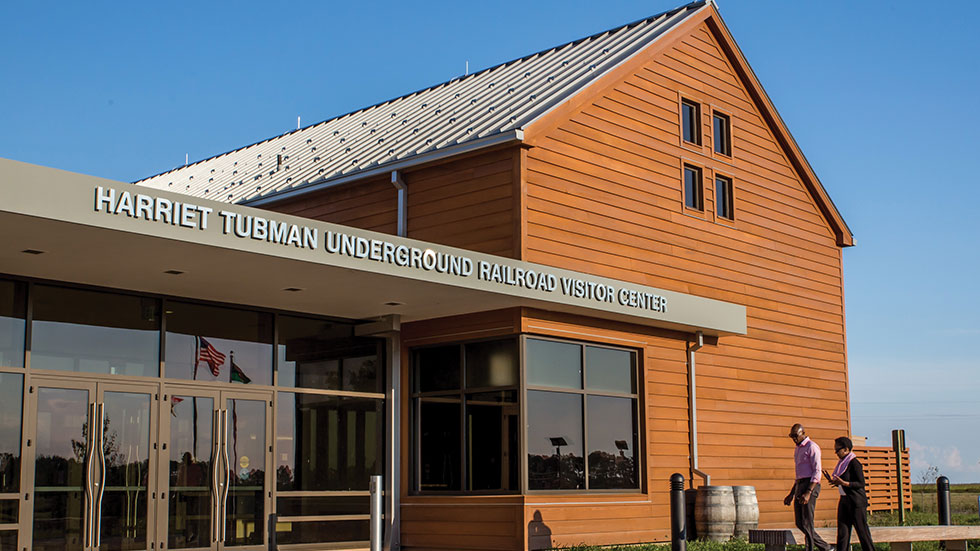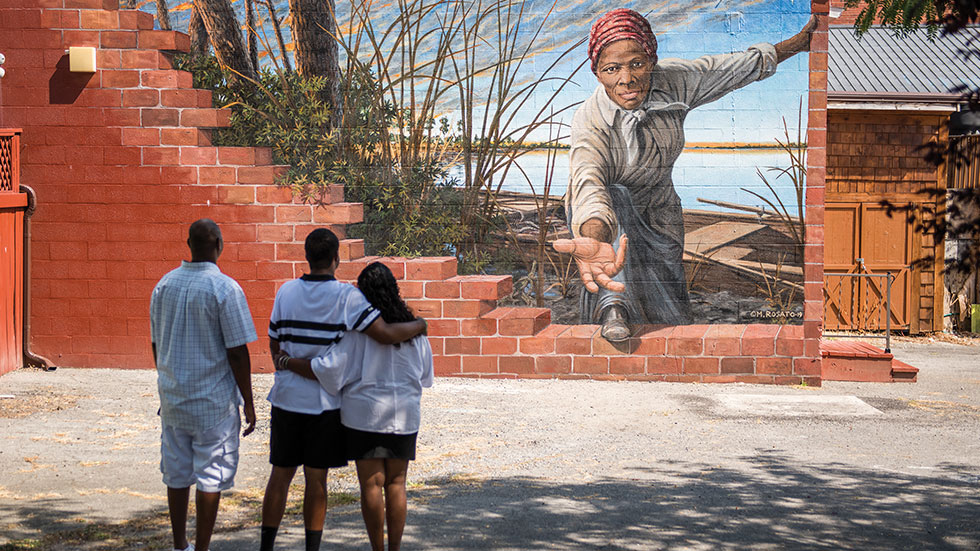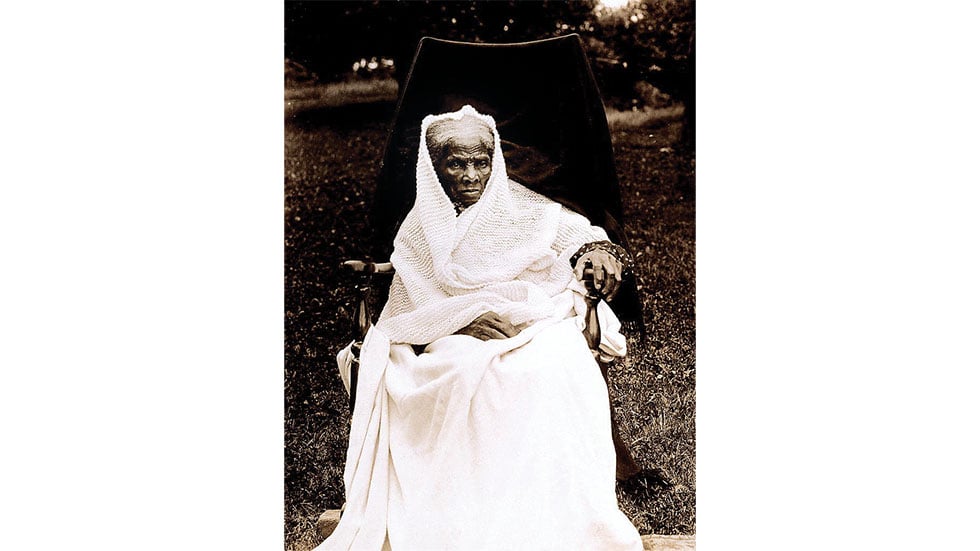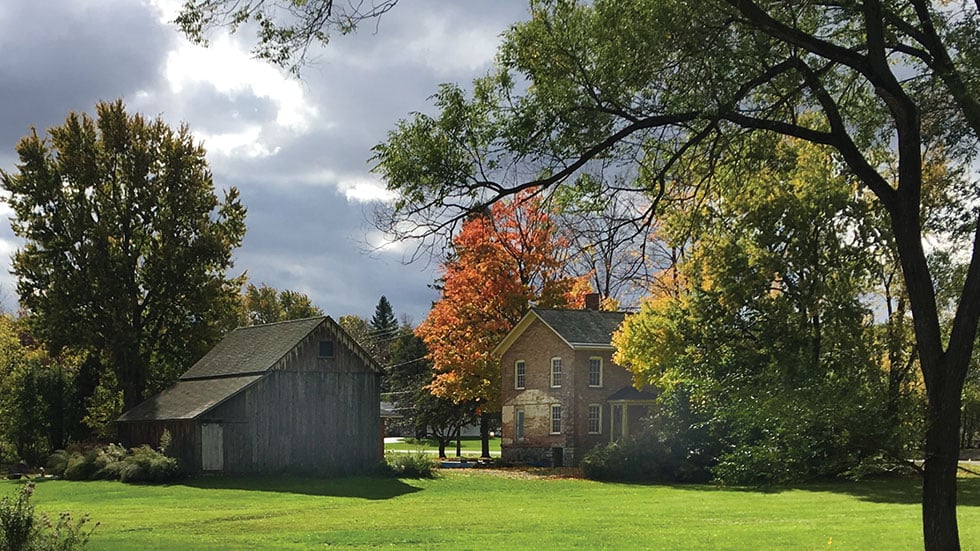Freedom's Beacon: Exploring The Life Of Harriet Tubman
Exploring the remarkable life of Harriet Tubman on the bicentennial of her birth
Perhaps you’ve never heard of Araminta Ross, born 200 years ago in Dorchester County, Maryland. But you most definitely know her by the name she later adopted: Harriet Tubman.
This year, the bicentennial of Tubman’s birth provides an opportune time for travelers to visit the places that had the most impact on her life: Maryland’s Eastern Shore, where she was born and from which she fled slavery in 1849, and Upstate New York, where she settled in 1859. Other than the time she served with the Union Army, she lived out her remaining decades in Auburn, New York.
The best way to learn about Tubman’s life in the southern mid-Atlantic is by journeying on the self-guided Harriet Tubman Underground Railroad Byway, which traverses 125 miles in Dorchester and Caroline Counties in Maryland, extends another 98 miles into Kent and New Castle Counties in Delaware, and ends in Philadelphia. It connects 45 sites of importance in the early life of the woman known as the Moses of her people.
 The Harriet Tubman Underground Railroad Visitor Center in Church Creek, Maryland. Courtesy Of Harriet Tubman Byway
The Harriet Tubman Underground Railroad Visitor Center in Church Creek, Maryland. Courtesy Of Harriet Tubman Byway
Maps and an audio guide are available free online at HarrietTubmanByway.org; at the visitor center of the Harriet Tubman Underground Railroad National Historical Park in Church Creek, Maryland; the visitor center in Dorchester County and other sites.
Jointly managed by the National Park Service and Maryland State Parks, the visitor center at the national historical park features an exhibition that immerses museum-goers in Tubman’s life through a film, photos and life-size dioramas. The exhibition emphasizes Tubman’s ability to overcome the obstacles of servitude, illiteracy, and seizures and chronic pain that resulted from a head injury sustained as a child when she refused to help a slave catcher.
 The Harriet Tubman mural Take My Hand by artist Michael Rosato is painted on the side of the Harriet Tubman Museum & Educational Center in Cambridge, Maryland. Courtesy of Maryland Office of Tourism
The Harriet Tubman mural Take My Hand by artist Michael Rosato is painted on the side of the Harriet Tubman Museum & Educational Center in Cambridge, Maryland. Courtesy of Maryland Office of Tourism
The episode—which was her first documented act of defiance—took place at the nearby Bucktown General Store, another stop on the byway, which looks much as it did in Tubman’s day.
On September 10, the town of Cambridge will unveil a 12,000-pound bronze sculpture of Harriet Tubman outside the Dorchester County Courthouse, once a site where people were sold to the highest bidder. It’s also featured on the byway.
 Harriet Tubman late in life, probably taken at her home in Auburn, New York. Retrieved From The Library Of Congress, Www.Loc.Gov item200271677
Harriet Tubman late in life, probably taken at her home in Auburn, New York. Retrieved From The Library Of Congress, Www.Loc.Gov item200271677
Adults may want to participate in the Bike the Underground Railroad tour on October 15, a fundraiser for the courthouse sculpture. Departing from Cambridge, the 25- and 43-mile rides parallel some of Tubman’s freedom journeys, with pauses at sites connected with the numerous trips she made to lead others out of enslavement.
For a complete list of Harriet Tubman-related sites and events in Maryland, go to visitmaryland.org/tubman-200.
Tubman’s escape, subsequent rescues and emancipation efforts brought her to numerous states and Canada before she took up permanent residence in Auburn, New York, in 1859. She lived in the city for more than 50 years, and it is where she wed, died and is buried.
 Harriet Tubman residence and barn in Auburn. Courtesy of National Park Service
Harriet Tubman residence and barn in Auburn. Courtesy of National Park Service
Visitors should begin their tour at the New York State Equal Rights Heritage Center with its interactive exhibits about people who took action against slavery, fought for women’s right to vote, advocated for unions and worked bravely on behalf of other matters of principle. A bronze sculpture of Tubman stands outside the center.From there, trace her path as a free woman in Auburn by following the self-guided 10-stop Harriet Tubman Lantern Trail detailed at EqualRightsHeritage.com. Among the stops is the mansion of US Senator William Seward and his wife, which served as a stop on the Underground Railroad. Guided tours of the mansion include the 1850 furnished basement kitchen where fugitives were hidden.
Seward had induced Tubman to move to Auburn and sold her the seven-acre plot of land where she built her long-time home. The land, now part of the Harriet Tubman National Historical Park, encompasses Tubman’s house, a reconstruction of the Tubman Home for Aged and Indigent Negroes that Tubman founded later in life, and a welcome center managed by the Harriet Tubman Home, Inc. One of the buildings has an exhibit that includes Tubman’s bed and items donated by her family. Tubman is buried in Auburn’s Fort Hill Cemetery, where she was given a funeral with military honors owing to her service with the Union Army as a troop leader and spy.
 Participants in the National Park Service’s Junior Ranger program at the Harriet Tubman National Historical Park in Auburn. Courtesy of National Park Service
Participants in the National Park Service’s Junior Ranger program at the Harriet Tubman National Historical Park in Auburn. Courtesy of National Park Service
Auburn and its Harriet Tubman sites will present a series of lectures, activities and commemorative events throughout 2022 in honor of Tubman’s 200th birthday. Information is available at harriettubman200.com.
When a person dies, their birth and death dates are commonly separated by a dash on their memorial stone. There’s an African American saying that the importance of your life is indicated by what you do in the dash. Tubman spent her time serving humanity as an abolitionist, nurse, spy, Union soldier, suffragist and founder of a home for the aged. It is an extraordinary dash that stands as a beacon for us all.
